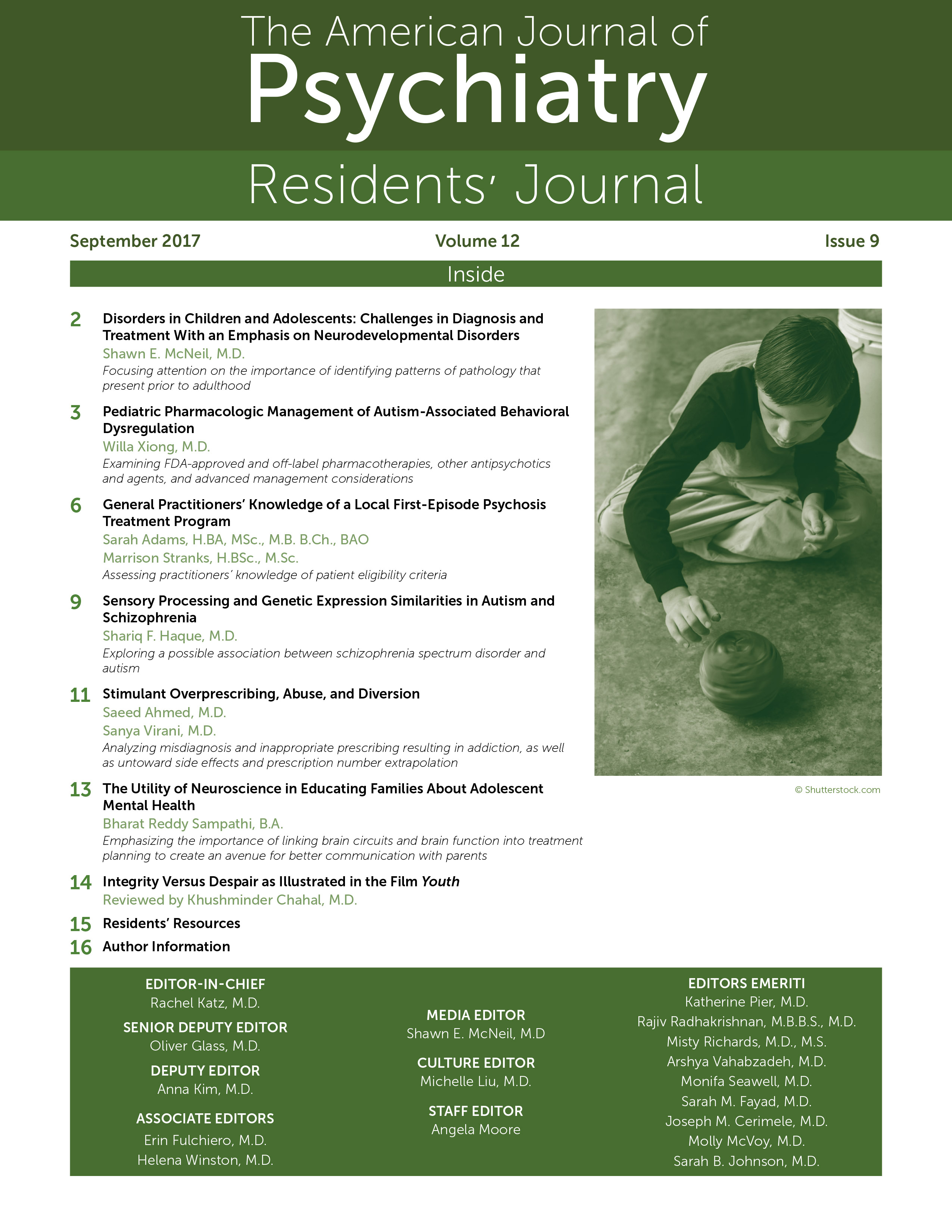Disorders in Children and Adolescents: Challenges in Diagnosis and Treatment With an Emphasis on Neurodevelopmental Disorders
As the specialty of psychiatry has matured, distinctions have emerged that necessitate an altered approach to the diagnosis and treatment of certain populations. In the case of children and adolescents, clinicians should have an understanding of the “developmental standard” expected of same-age peers and be able to consider a patient’s behavior and “degree of competence” in this context (1). The younger the patient, the more significant nonverbal communication becomes, and the more important the role of play in the evaluation process (1).
Specific disorders may appear during this critical stage that can have a lifelong impact. This might also be a time when the first signs and symptoms of mood and psychotic disorders present themselves. Substance use patterns can begin to take shape, and clinicians may even be able to identify “patterns of personality pathology” in the adolescent age group (2). Detecting such symptoms in this population requires a practitioner in tune to the nuances that make these patients and their clinical presentations so unique.
Disorders affecting children and adolescents tend to present unique challenges to families, physicians, and others who seek answers and mitigation of symptoms. Although most psychiatric conditions may present before adulthood, neurodevelopmental disorders are unique in that their symptoms must typically be present in the early developmental period or at least by adolescence (3). As an example, individuals with autism spectrum disorder (ASD) may present during this period with symptoms that vary widely from one case to the next (4).
This issue of the Residents’ Journal focuses on matters affecting children and adolescents, with an emphasis on neurodevelopmental disorders like ASD and attention deficit hyperactivity disorder (ADHD). One article examines the role of pharmacological methods in treating autism-associated irritability and aggression. Another article investigates general practitioners’ knowledge of early-psychosis intervention programs. A case report analyzes co-occurring ASD and new-onset auditory hallucinations, connecting these two conditions as sensory processing disorders. Another case report sheds light on issues associated with inappropriate prescribing of amphetamine/dextroamphetamine following misdiagnosis. A commentary provides insight into mental health stigma, particularly in certain cultures, as well as efforts by the National Institute of Mental Health to integrate neuroscience into treatment and create opportunities for communication with parents about their child’s care.
We hope that this issue may serve as an informative tool that will shed light on the intricacies of treating children and adolescents.
1. Dulcan MK (ed): Dulcan’s Textbook of Child and Adolescent Psychiatry, 2nd ed. Washington DC, American Psychiatric Publishing, 2016, pp3–5 Link, Google Scholar
2. : An empirically derived classification of adolescent personality disorders. J Am Acad Child Adolesc Psychiatry 2014; 53(5):528 Crossref, Google Scholar
3.
4. : Practice parameter for the assessment and treatment of children and adolescents with autism spectrum disorder. J Am Acad Child Adolesc Psychiatry 2014; 52(2):237–239 Crossref, Google Scholar



